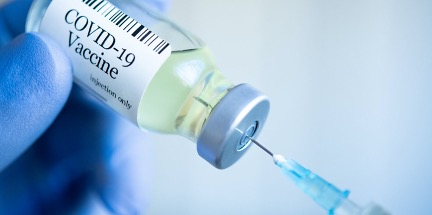Natalie Martini ’21, Managing Editor

If you have just about had it with the word “quarantine”, then you are probably counting the minutes until COVID-19 vaccination becomes available for everyone, in order for us to return to a somewhat normal interactive environment. However, with all the back and forth we have seen in the news about the vaccinations lately, it can be overwhelming to see how Pennsylvania is currently handling distribution.
Recently, there have been updates put in place assuring everyone that vaccine distribution will pick up in the remaining days of March for people in Phase 1A. According to ABC27 News, Pennsylvania Secretary of Health, Alison Beam, signed an order that ensures everyone in Phase 1A will have appointments scheduled with vaccine providers by March 31st. Another priority set in place is for teachers to get vaccinated with the Johnson & Johnson vaccine before the end of March as well.
As stated by ABC27 News, The Pennsylvania Department of Health also believes that Phase 1B and 1C will move faster in comparison to distribution for Phase 1A, as long as they have the expected amount of vaccines “coming in from the federal government and pharmacy partnerships”. They note that the state is working with data to set up accessible vaccine sites for high-risk groups of people as well. While all this information sounds like good news, we notice individuals we know who should be eligible to receive the vaccine but have not yet been able to make an appointment.
Currently, according to the Pennsylvania department of health, we are in Phase 1A, which generally prioritizes the vaccination of healthcare workers, people at the age of 65 or older, and anyone with a health condition that compromises their immune system. Phase 1B generally includes frontline workers, food and grocery store workers, childcare workers, etc. However, on a positive note, PA is currently taking the initiative to vaccinate some of the groups within this phase early on. Phase 1C includes most of the remaining jobs not included in the previous groups such as those in public health, construction, or banking.
Many people within Phase 1A have yet to receive their vaccination, despite the priority they were supposed to be given above others. This may seem expected considering the number of people who fall under this category in PA, let alone the United States. However, some individuals simply lie about preexisting conditions in order to get vaccinated as soon as possible, making appointments less accessible for those who actually need one. While the goal here is to get as many people vaccinated as possible, it seems unfair that not everyone who needs the vaccine will get it any time soon because a less eligible person decided to cheat the system.
When I use the phrase “cheat the system” I am not simply referring to the individuals who use a technicality to fall under a category of eligibility. I am referring to the people who outright lie about their condition in order to get ahead of other people. Granted, there is a gray area here and we should not spend all our energy pointing fingers at each other when we do not fully know everyone’s situation. However, there is a question of ethics to be addressed here. According to Vox, a professor at Niagara University, James Delaney, made the connection that the vaccine distribution list is much like an organ donor list. They both were carefully considered and created by experts in the field of medicine to prioritize the health of higher-risk individuals.
I have seen and heard stories about people who lied their way ahead on the list and have received their first vaccine. While this did not bother me at first, I still know individuals who are over the age of 65, or have a compromised immune system and are struggling to find a place to get vaccinated. From an ethical standpoint, it does not seem right that these people must wait because a person at lesser risk was too impatient. This debate is obviously very circumstantial, and I do not intend to shame anyone for wanting to protect themselves and their families during a pandemic. I think it is still important to talk about, considering that it contradicts the priorities set in place by professionals in order to get everyone vaccinated in the most efficient way.
While the vaccination process has gotten off to a rough start, and there may continue to be bumps ahead, there is still a ray of positivity in the fact that we have access to vaccinations at all. According to Pittsburgh’s Action News 4, a chart depicting the “number of vaccinations by date” shows that the number of people who received both partial and full vaccination has gradually increased since December 2020. More recently, vaccination numbers have dropped a bit, but that seems to be a pattern among the chart, and will hopefully continue to grow higher overall in the next few weeks.
Despite some disorganization among the COVID-19 vaccine distribution in February, it seems that PA has recently picked up the pace in the rollout. According to NBC 10 Philadelphia, PA ranks one of the highest states of vaccines administered with 4.4 million people at least partially vaccinated as of March 23rd, although it is important to take PA’s population into account when considering its ranking.
So how is PA making an effort to increase the number of vaccines distributed? As reported by NBC 10 Philadelphia, the plan is to send more vaccinations to “health care providers who have proven their effectiveness in administering vaccines and at quickly reporting data”. This way, Pennsylvania can trust that the providers they are supplying vaccines with will administer as many as possible in an organized and effective fashion.
Another factor that has been talked about lately is the difference among the top three authorized vaccines. Many people have been interested in getting access to the Johnson & Johnson vaccine as it does not require a second dose. This is why there is a plan set in place for teachers to receive the shot by the end of the month, as it is a more immediate option. Some people argue that the J&J vaccine is not as effective in preventing COVID-19, as much as Pfizer or Moderna are. However, according to GoodRx, while Pfizer has an efficacy rate of 95% and Moderna 94%, J&J still has a high overall efficacy rate of 85%, and all of the vaccines are proven to be effective at preventing hospitalization and death.
Although there is a lot to consider in the discussion of vaccine distribution in PA, what is most important is that the department of health is making efforts to ensure that vaccination is available to everyone who currently needs it most and that eventually, we will see it available to everyone in the state. In the meantime, we must stay informed and make an effort to keep ourselves and those around us safe from the virus, and hopefully, we will see a more efficient and organized distribution of vaccines within the next couple of weeks for Pennsylvania.





